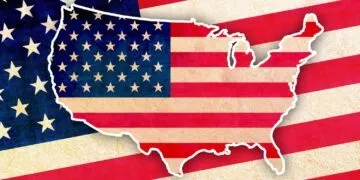Officially nicknamed the “Land of Enchantment” but also known as “The Colorful State,” New Mexico was the 47th state to join the United States of America on January 6, 1912.
It has a population of 2,096,829 people (as of 2019), making it the 36th most populous state. New Mexico is bordered by the states of Oklahoma, Utah, Texas, Colorado, and Arizona.
With 121,590 square miles (314,917 square kilometers) of land and water, it is the fifth-largest state.
The capital of New Mexico is Santa Fe, situated centrally in the state’s northern regions.
That’s enough fast facts about the Land of Enchantment for now, though. We’re here to learn some of the more interesting facts!
People have lived in New Mexico for at least 11,000 years!
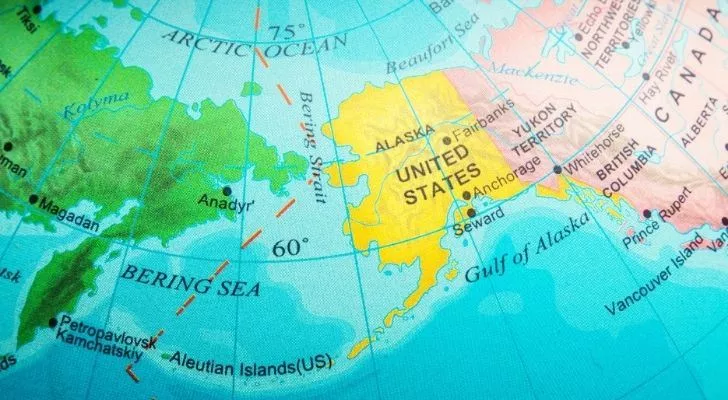
Archaeological evidence shows us that the first people to call the region now known as New Mexico home arrived sometime around 9,200 BC.
They came from the north and were the direct descendants of the first intrepid explorers who traveled from the far east of modern-day Russia into modern-day Alaska via the Bering Strait.
These early nomadic people survived off the land, eating what they could gather or hunt.
For thousands of years, life continued in a very similar way to this.
Around 300 BC, people began to farm crops and lived in simple huts called pit-houses.
The people of New Mexico lived in complex advanced societies long before Europeans arrived in North America.
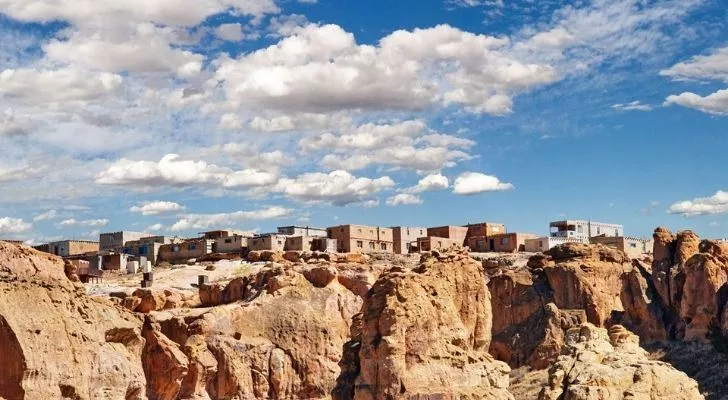
By 1000 AD, the Puebloans were the most prominent group of people living within the region.
These people had learned how to not just live in the harsh arid climate but to thrive in it.
They moved from pit houses into permanent planned villages with irrigation, terrace-style farming, and developed complex social structures.
The Pueblos (as the Spanish later called their towns) were almost always based in highly defensive positions at the edges of cliffs or on rocky mesas.
While these people are commonly called the Puebloans, each Pueblo had its own identity and quite often their own language, with just their culture and ancestry in common.
The first Europeans to reach New Mexico were the Spanish.
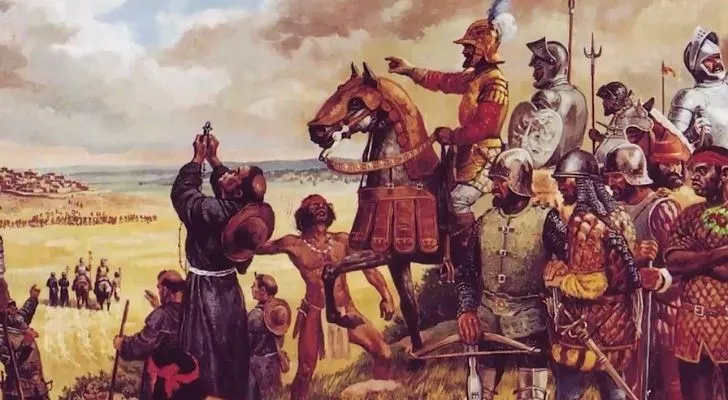
The first Europeans to explore the Americas, in general, were the Spanish, too.
Some of these early Spanish explorers reported tales of highly advanced cities within the New Mexico region.
Fray Marcos de Niza, a Spanish Missionary, became absolutely convinced that these cities were some of several fabled “lost cities of gold.”
This subsequently led to an expedition led by the conquistador Francisco Vásquez de Coronado into the region between 1540 and 1542.
The first Native Americans that Coronado’s expedition came across in the New Mexico region were the Zuni people, one of the many Pueblo peoples.
The expedition ultimately found no trace of any cities full of gold and eventually gave up and returned south.
New Mexico was not named after the country of Mexico.
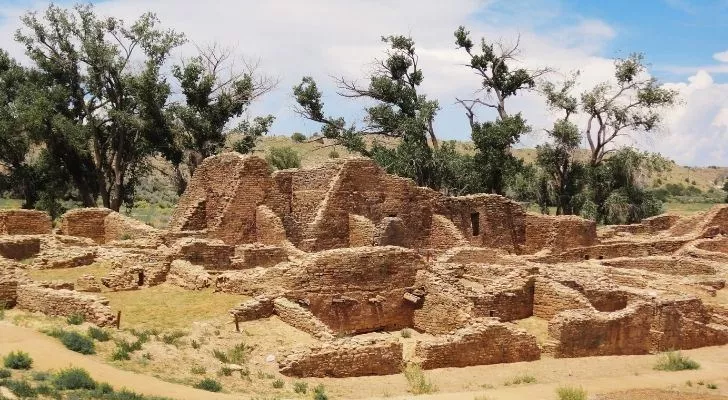
The name “Mexico” originally comes from the Nahuatl language spoken by the Aztecs.
It refers to the region of central Mexico, which lay at the heart of the Aztec Empire.
The Spanish Explorers who first set foot in the New Mexico region decided that the land was similar to that of the Aztecs and called it Nuevo Mexico.
It wasn’t actually until much later, in 1821, that modern-day Mexico gained its independence from Spain and chose the name of Mexico.
Santa Fe was founded more than 400 years ago, making it the oldest capital city in the US.
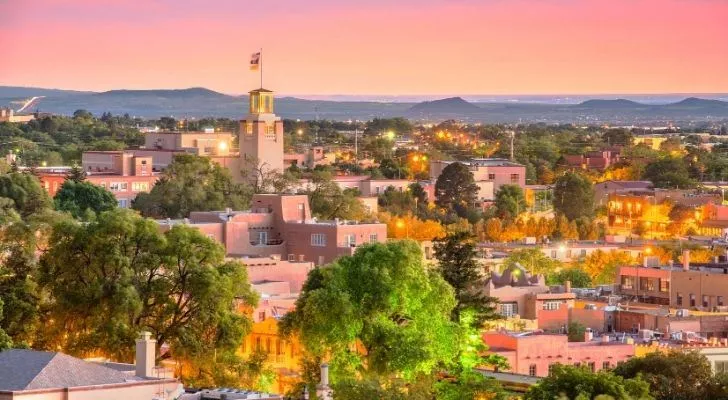
The land that now encompasses New Mexico’s state was first declared a province of New Spain in 1598 by King Philip II of Spain.
Commonly shortened to Nuevo Mexico, the province’s full title was Santa Fe de Nuevo Mexico.
The province’s first capital at San Juan de Los Caballeros was short-lived.
The capital was relocated to La Villa Real de la Santa Fe de San Francisco de Asís (later shortened simply to Santa Fe) in 1610.
Spain was chased out of New Mexico by the Pueblo people.
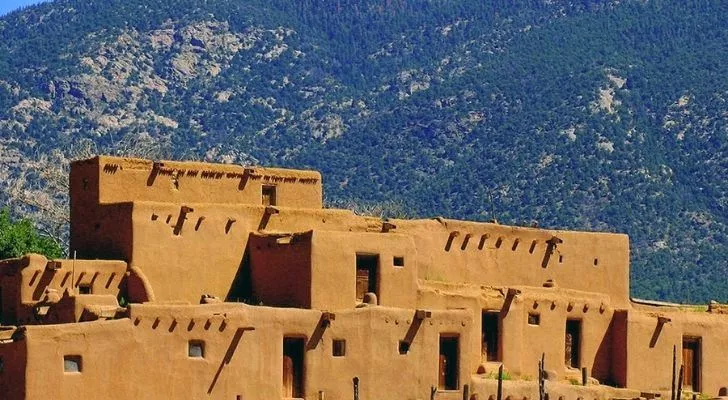
Spanish rule in Nuevo Mexico was harsh, to put things incredibly mildly.
The governors were increasingly greedy, with their main goal in the region appearing to revolve solely around extracting as much wealth as possible from the Pueblo people and their land.
Many heinous acts were committed during Spain’s early rule in Nuevo Mexico, ranging from enslaving the Puebloans to outright slaughtering them.
The last straw to break was when Spain attempted to wipe out the Puebloan religion.
On August 10, 1680, the northern Pueblo towns rose against Spanish rule, first driving out the colonizers from the local areas before moving in on Santa Fe.
Santa Fe was besieged by the Puebloans within three days, with all other Spanish settlements lying in ruin.
While the Spanish were effectively driven out of the region, they returned in force with much more vicious tendencies twelve years later and retook the land.
While the revolt was short-lived, it was the only case of a successful Native American uprising against European colonizers.
New Mexico didn’t seem to care when Mexico gained its independence from Spain.
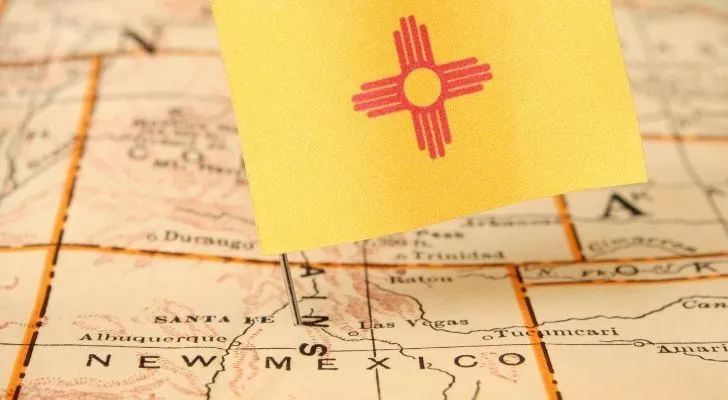
While the Mexican War for independence was a long and grueling fight that ran from 1808 until Spain’s defeat in 1821, it was a fight that focused on central Mexico.
When the new Mexican government took over, the New Mexicans seemed to care little.
By this point, the people of New Mexico, whether Puebloan or Spanish in descent, were more unified and focused on New Mexico itself rather than any controlling government or empire.
Texas spectacularly failed when it tried to invade New Mexico.
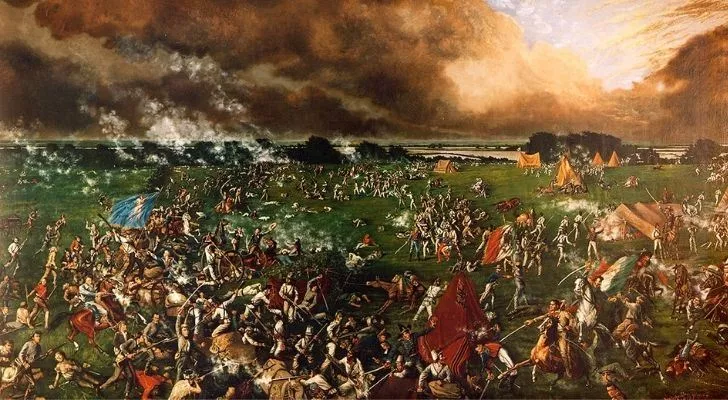
In 1835, the region, including modern-day Texas and New Mexico, was actually part of Mexico.
In 1836, what we now call Texas seceded from Mexico and called itself the Republic of Texas.
While doing so, it laid claims to large parts of the New Mexico region, including Santa Fe.
The then-president of the Republic of Texas, Mirabeau Lamar, sent a supposed trading expedition to Santa Fe.
While it did include many merchants and their goods, it was also accompanied by a large detachment of men with artillery equipment.
The expedition was doomed from the beginning, though. They brought half as much food as needed and lost their guide early on.
By the time they finally stumbled into New Mexico, an armed force was waiting to greet them.
The entire expedition was promptly captured and forced to march all the way south to Mexico City.
The US took New Mexico by force in 1846.
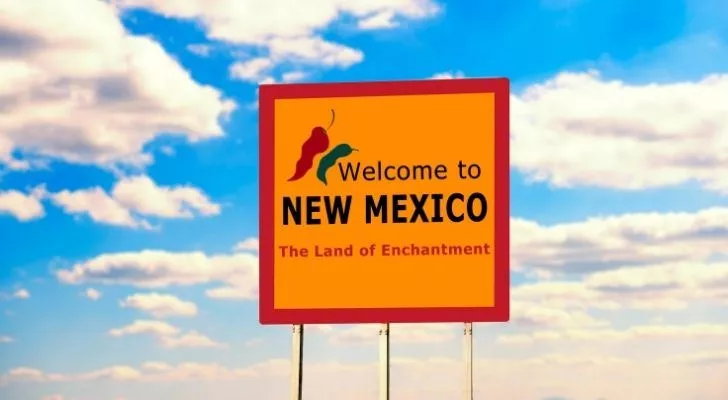
In 1846, the United States annexed the Republic of Texas.
Mexico held that this region was a rebellious part of the country and took great offense.
War broke out between the two nations as a result.
During the war, the American general Stephen Kearney took control of New Mexico after he marched a force of more than 2,500 men, including cavalry, into Santa Fe.
While the invasion was met by little resistance from the Mexican government, that wasn’t the case with the residents.
In 1847, local rebels unsuccessfully rose against US rule, killing acting governor Charles Brent in the process.
By the time the rebellion was quashed, at least 300 native New Mexicans were dead.
The following year in 1848, New Mexico was made a US territory with the Treaty of Guadalupe Hidalgo.
The world’s first atomic bomb was detonated in New Mexico.
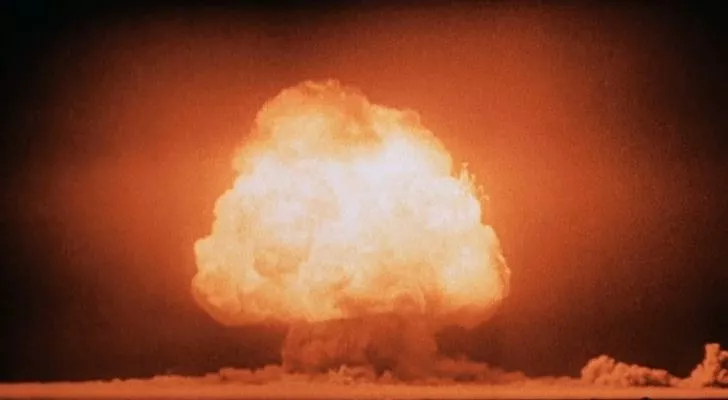
On July 16, 1945, the world changed forever with the detonation of the first-ever atomic bomb.
The bomb, nicknamed Trinity, was the culmination of years of efforts by some of the greatest minds in science at the time.
The final stages of its development were carried out at a research facility in Los Alamos.
The device’s detonation was the final test and was carried out just 120 miles (193 km) south of Santa Fe.
You may also like: 3 Times The World Almost Entered A Nuclear War
A nuclear bomb was accidentally dropped just outside of Albuquerque, New Mexico.
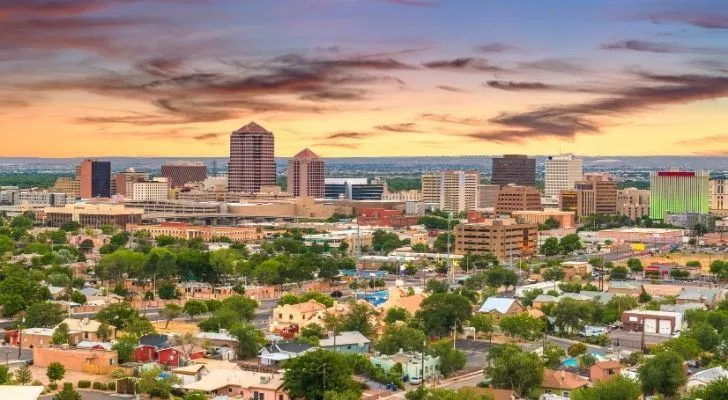
It was quite fortunate that the Mark 17 nuclear bomb was one of the first of its kind to include a fail-safe that prevented any sort of accident causing a nuclear reaction.
The reason that it’s incredibly fortunate is that one of these bombs fell out of a B36 bomber on May 27, 1957, just as the plane was nearing the Kirtland Air Force Base in New Mexico.
While a nuclear detonation didn’t happen, the primary explosives in the bomb still went off, which created a crater 25 feet (7.6 m) wide and 12 feet (3.7 m) deep.
The breakfast burrito was invented in New Mexico.

Anyone who lived and died before the 1970s must have had a pretty bleak life, really.
The breakfast burritos (at least as we know and love them today) weren’t invented until 1975.
Sure, people may have eaten burritos for breakfast before this, but they weren’t eating a burrito stuffed with egg and potatoes for their first meal of the day.
According to the breakfast burrito’s creator, that is what makes it really stand out.
The Santa Fe restaurant Tia Sophia’s is responsible for birthing this culinary delight when they first put it on their menu in 1975.
A town in New Mexico built a school that doubled as a Nuclear bunker.
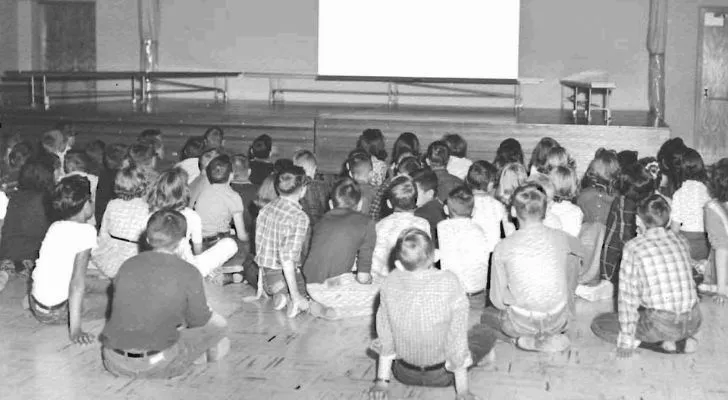
During one of the Cold War’s scarier moments, the US realized they needed more functional fallout shelters, and it was through this realization, that the Abo elementary school was built.
The unique nature of the school lies in the fact that the entire building is underground, with just the playground above ground.
It was also constructed to function as a nuclear fallout shelter if needed.
The only entrances to the school itself are via three sets of stairs, each of them were protected by blast doors.
According to the architect’s plans, the shelter could withstand a 20 megaton blast.
Unlike most schools, Abo had its own medical supply storage, well for drinking water, and even a morgue.
The school continued to operate until 1995 but shut down due to high maintenance costs.
New Mexico is home to the largest white sand dune field.
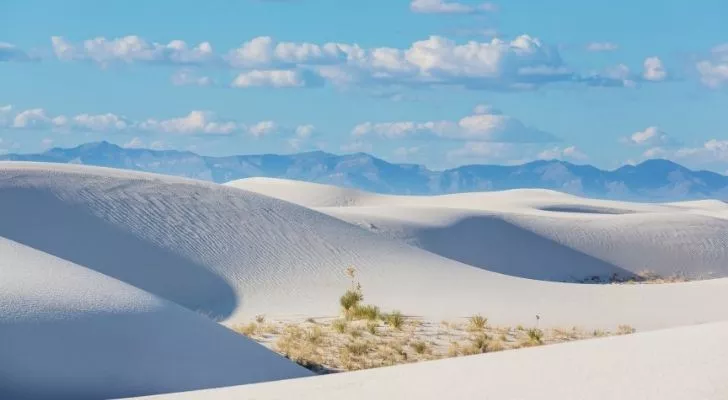
The White Sands National Park in New Mexico is one of those destinations second to none anywhere else on Earth.
The park lies in the far south of the state, a little way out from the small town of Las Cruces.
The dunes themselves take up a huge swathe of land, measuring around 275 square miles (712 square kilometers).
The dunes gain their white color from the sand itself, which is actually gypsum sand.
New Mexico has some outright ridiculous laws.

New Mexico is no exception when it comes to holding onto silly or antiquated laws.
For example, in the town of Las Cruces, it’s illegal to carry a lunchbox down the main street.
While it’s legal to bet on horse races, it’s illegal to bet on either ostrich or camel races.
Speaking of horses, it’s illegal to wear a kimono while riding a horse in Raton. Oh, and if you trip a horse and it gets hurt, it’s a felony!
New Mexico is a state that’s forever surprising you.
Most people would simply pass off the state as hot, dry wasteland and never bother making the trip.
Anyone that does make it all the way south to this great state is always mesmerized by the deeply complex history, the unique culinary delights, and the straight-up bizarre happenings.
If you’re looking for a state to knock your socks off, New Mexico is the place to go!


